PRESENTATION: Pacita Abad
 Widely defined by her use of color, something she remained adamant about from her early studies, Pacita Abad pioneered new forms of materiality in her work, illustrated in one instance by her widely celebrated trapunto paintings, a form of quilted painting the artist originated by stitching and stuffing her painted canvases instead of stretching them over a frame. Her oeuvre featured an immense array of subject matter, from tribal masks and social realist tableaus to lush and intricately rendered underwater scenes and abstractions.
Widely defined by her use of color, something she remained adamant about from her early studies, Pacita Abad pioneered new forms of materiality in her work, illustrated in one instance by her widely celebrated trapunto paintings, a form of quilted painting the artist originated by stitching and stuffing her painted canvases instead of stretching them over a frame. Her oeuvre featured an immense array of subject matter, from tribal masks and social realist tableaus to lush and intricately rendered underwater scenes and abstractions.
By Dimitris Lempesis
Photo: Walker Art Center Archive
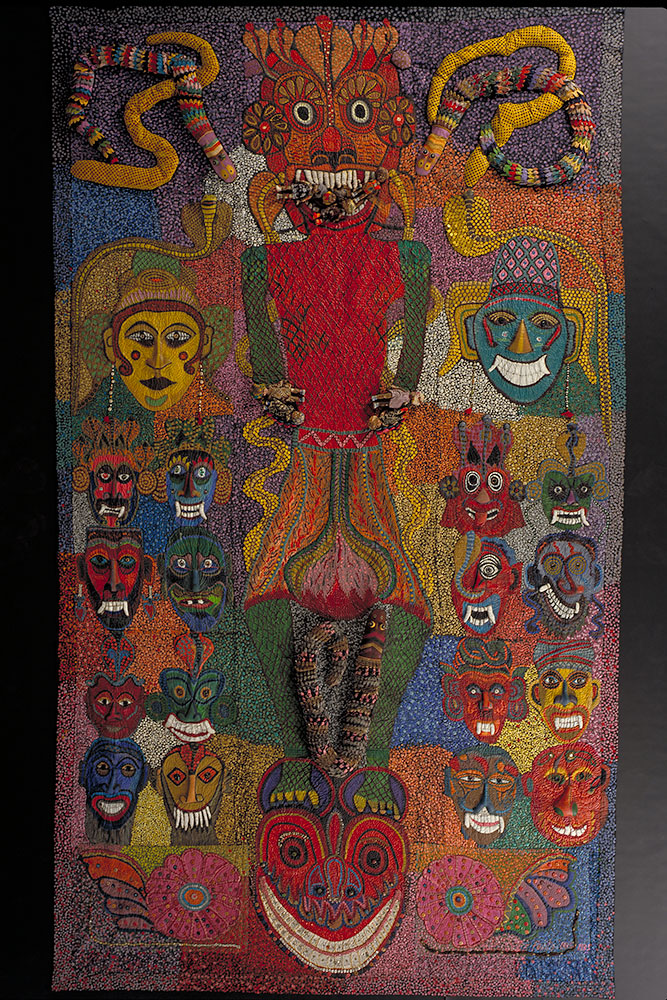
Including more than 100 works drawn from private and public collections across Asia, Europe, and the United States, the first retrospective of Pacita Abad’s presents significant and rarely-seen works from across her 32-year career. A largely self-taught artist, Abad developed a distinct visual vocabulary that embraced the artistic traditions of global cultures and actively blurred the boundaries between fine art and craft. While Abad was engaged in artistic and political dialogues during her life, the depth, range, and inventiveness of her work is only now coming to prominence. The presentation positions Abad within art historical narratives, providing new insights into her conceptual and aesthetic evolutions as well as the life experiences that so richly influenced her practice. Works from her “Immigrant Experience” series (1983–1995) highlight the rising multiculturalism of the 1990s. These works call attention to the era’s contradictions and omissions, centering the sufferings and triumphs of people on the periphery of power. The multiplicity of stories referenced in the series include such events as the 1992 Los Angeles riots, the Haitian refugee crisis, and the detention of Mexican migrant workers at the US border, offering an intimate look at lives often obscured by the reductive, xenophobic headlines of the time. Pacita Abad was born in Batanes, Philippines, and moved to the United States in 1970. While she spent more than a decade living in different parts of the country, and became a U.S. citizen in 1994, she traveled extensively and spent most of her career living in cities across the globe. Over the course of her life, she visited more than 60 countries, including Bangladesh, Sudan, the Dominican Republic, Indonesia, and Singapore. Her engagement with local makers inspired her lifelong interest in textiles, color and pattern, and experimentations with an impressive range of materials and techniques. The exhibition at the Walker highlights the significance of both Abad’s immigrant experience as well as her many travels to the development of her practice, which celebrated non-Western art forms historically associated with women’s work and craft. The exhibition is organized in a loose chronological order that emphasizes overlapping themes and material engagements. The exhibition is anchored by a wide selection of Abad’s “trapunto” paintings, a hybrid art form in which she hand-quilted her painted canvases instead of stretching them over frames. Examples of the artist’s trapunto paintings are featured in each gallery of the exhibition, capturing both the flexibility and play that the approach afforded Abad and its importance to her overarching practice. The exhibition also includes lesser known but equally significant selections of her works on paper, sculptures, ceramics, and costumes. During her lifetime, Abad made thousands of artworks. Among the featured cycles of works in the exhibition are Abad’s Social Realist works from the 1970s, which include powerful portraits of individuals escaping political persecution and economic injustice, as well as her Immigrant Experience works from the 1990s, which capture the contemporaneous experiences of diasporic communities from Asia, Africa, and Latin America. Also featured are works that are inspired by Indigenous masking traditions Abad encountered in Africa, Oceania, and the Americas, including “Masks from Six Continents” (1990–93), a 50-foot-long fabric mural originally commissioned for the Washington, D.C., Metro Center that is installed for the first time in over 30 years for the exhibition. The artist’s decades-long engagement with patterned abstraction was in part inspired by late nights listening to jazz and blues, with numerous works capturing the idiosyncratic spontaneity and syncretic sensibility of those musical idioms. Abad’s works inspired by the electric colors of marine wildlife are also included, highlighting her sensitivity to the beauty and precariousness of the Earth’s ecosystems. Together, the featured works showcase the energetic interplay between abstraction and figuration in Abad’s practice and illuminate her engagement with people, places, and critical issues of her time. Presented in conjunction with the exhibition, the documentary “Wild at Art” (1995) offers an intimate portrait of the artist in Washington, DC, sharing stories of her life and work with filmmaker Kavery Kaul, including her “Immigrant Experience” series and the installation of “Masks from Six Continents” at the Metro Center subway station. Recently restored by the Academy Film Archive in 2023, the film was directed by Kavery Kaul, produced by Riverfilms, and presented by Asian Women United.
Photo: View of the exhibition “A Million Things to Say”, Museum of Contemporary Art and Design (MCAD), Manila, 2018. Image courtesy the Pacita Abad Art Estate. Photo: Pioneer Studios
Info: Curators: Victoria Sung and Matthew Villar Miranda, Walker Art Center, 725 Vineland Place, Minneapolis, MN, USA, Duration: 15/4-3/9/2023, Days & Hours: Wed & Fri-Sun 11:00-17:00, Thu 11:00-21:00, https://walkerart.org/
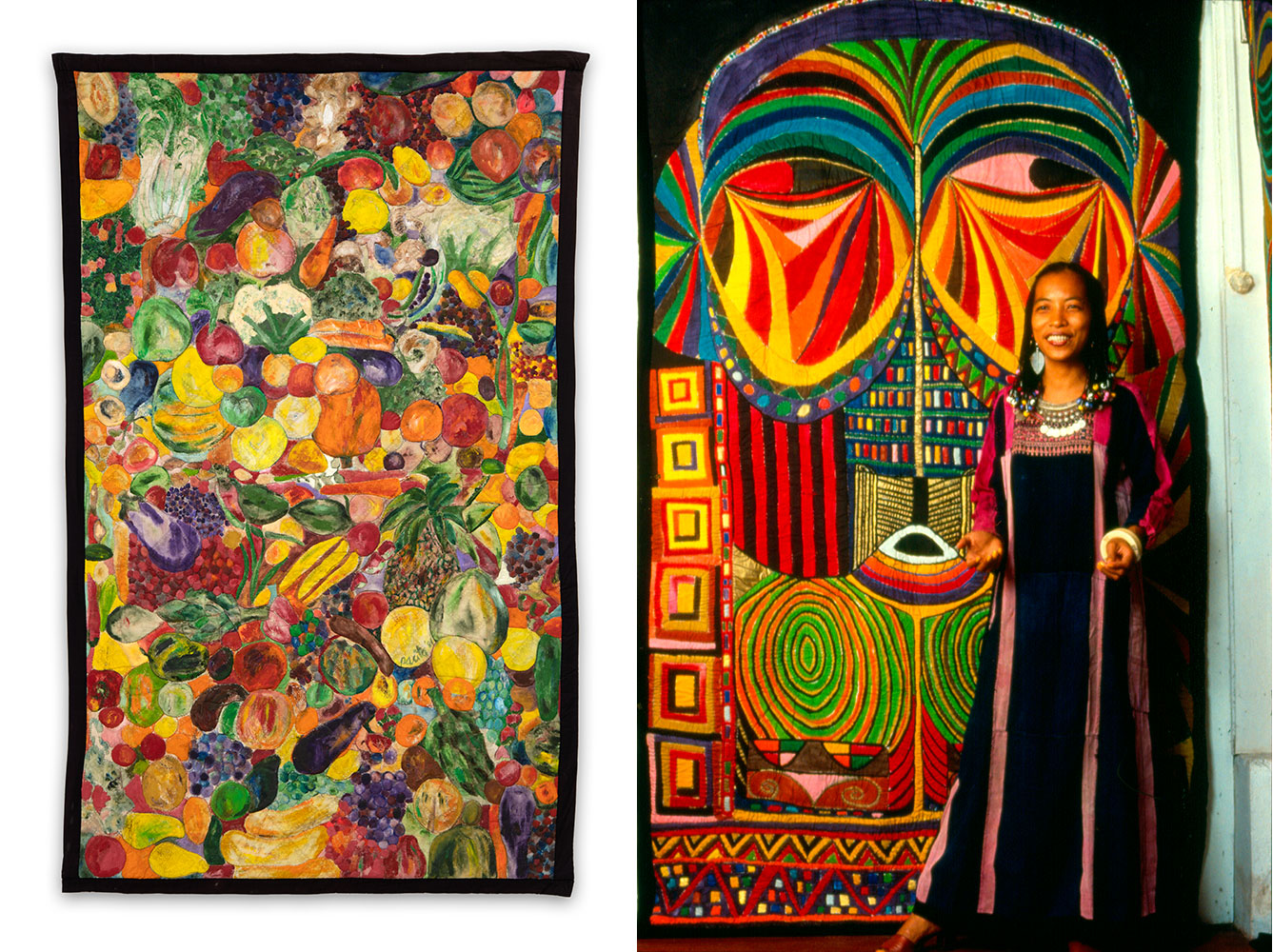
Right: Pacita Abad in front of: European Mask, 1990, acrylic paint, silkscreen and thread on canvas, 103 x 60 in., collection of Tate Modern, courtesy the Pacita Abad Art Estate
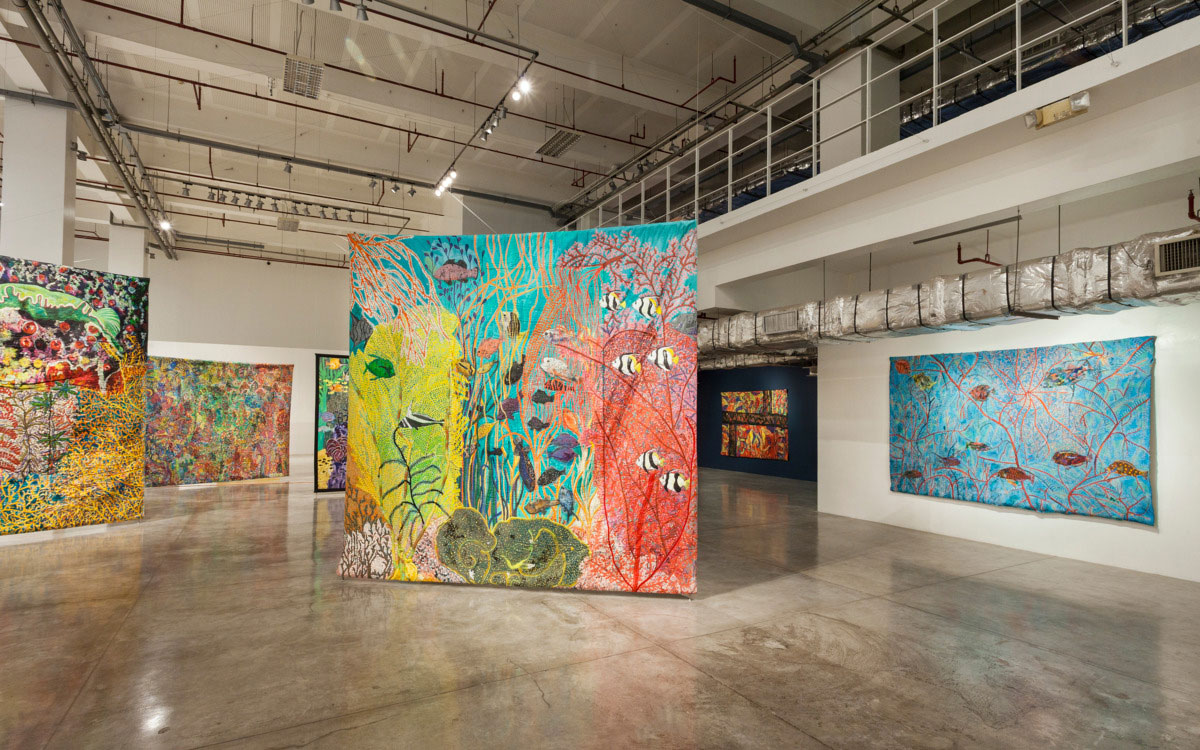

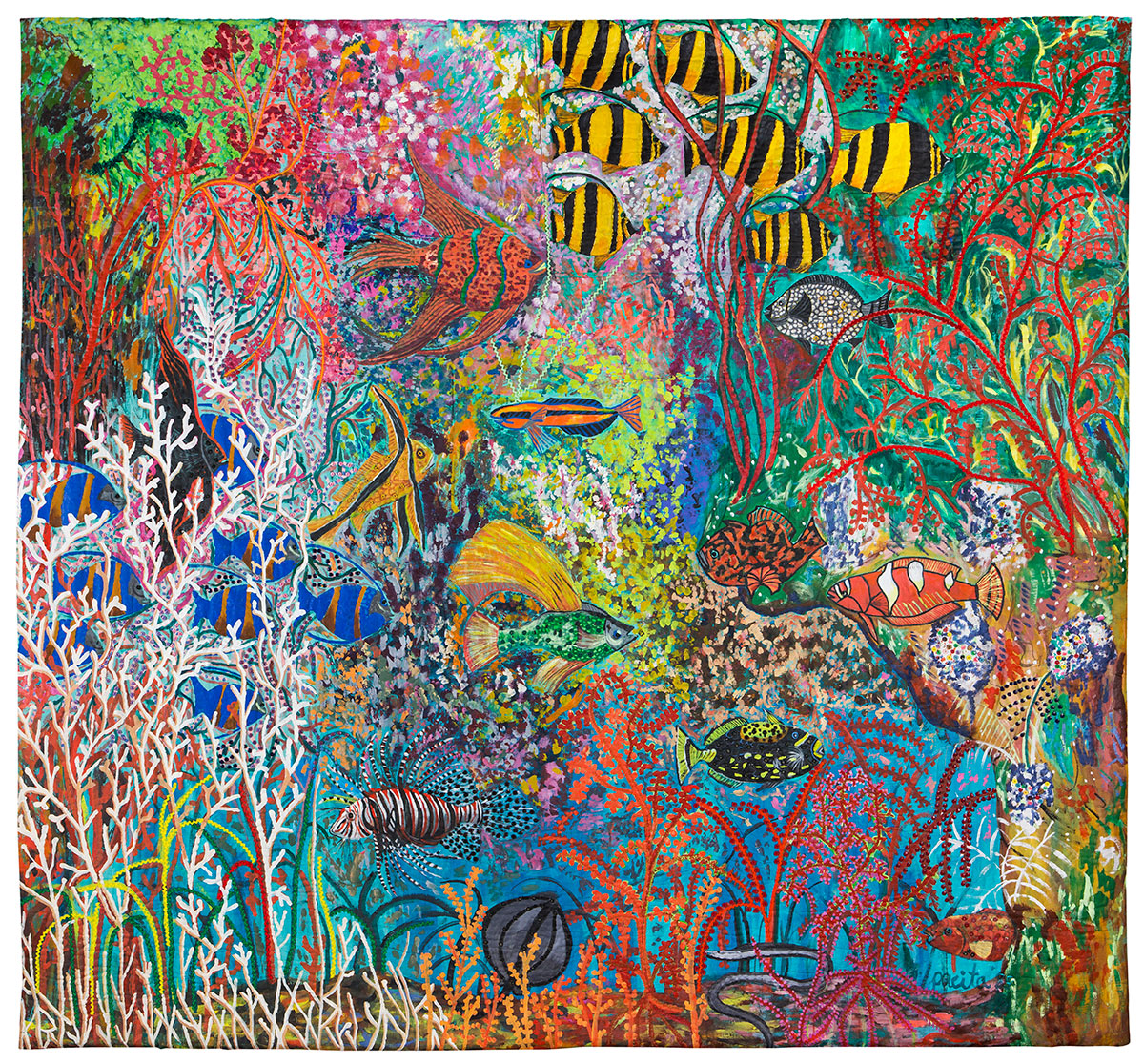
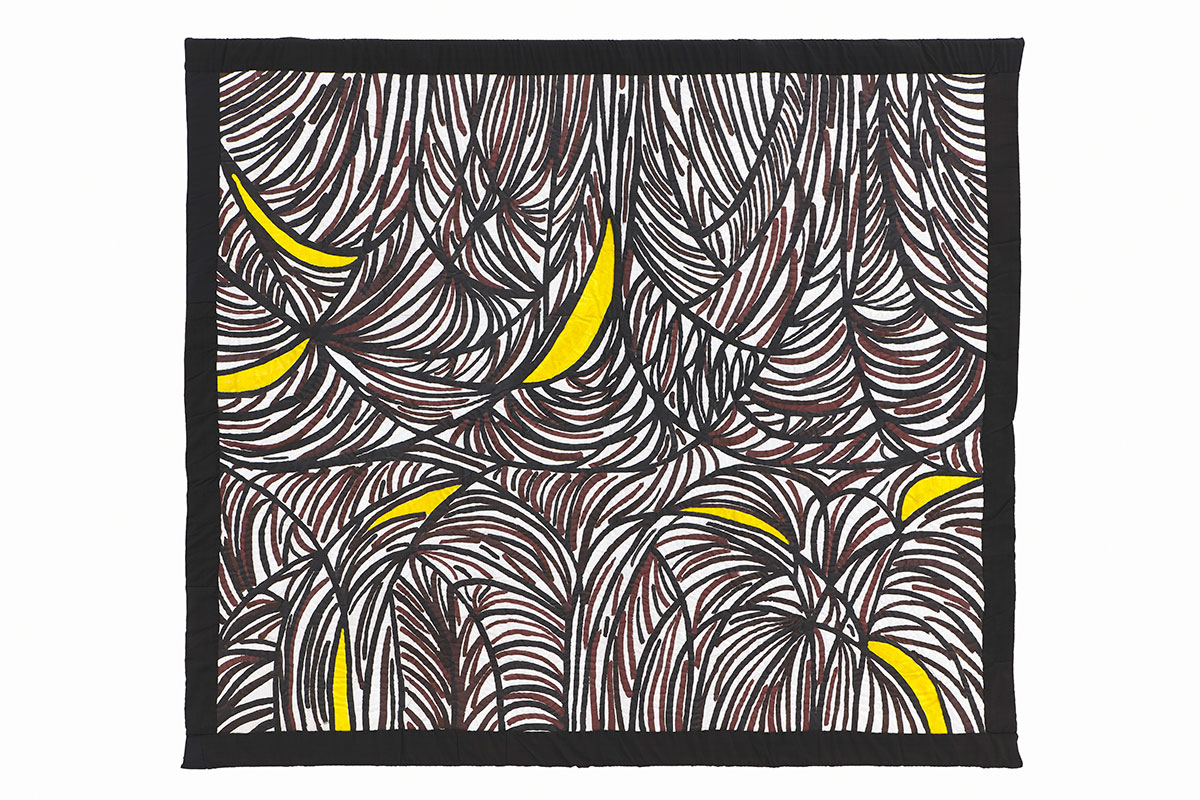

Right: Pacita Abad, L.A. Liberty, 1992, Acrylic, cotton yarn, plastic buttons, mirrors, gold thread, painted cloth on stitched and padded canvas, 94 × 58 in | 238.8 × 147.3 cm, courtesy the Pacita Abad Art Estate
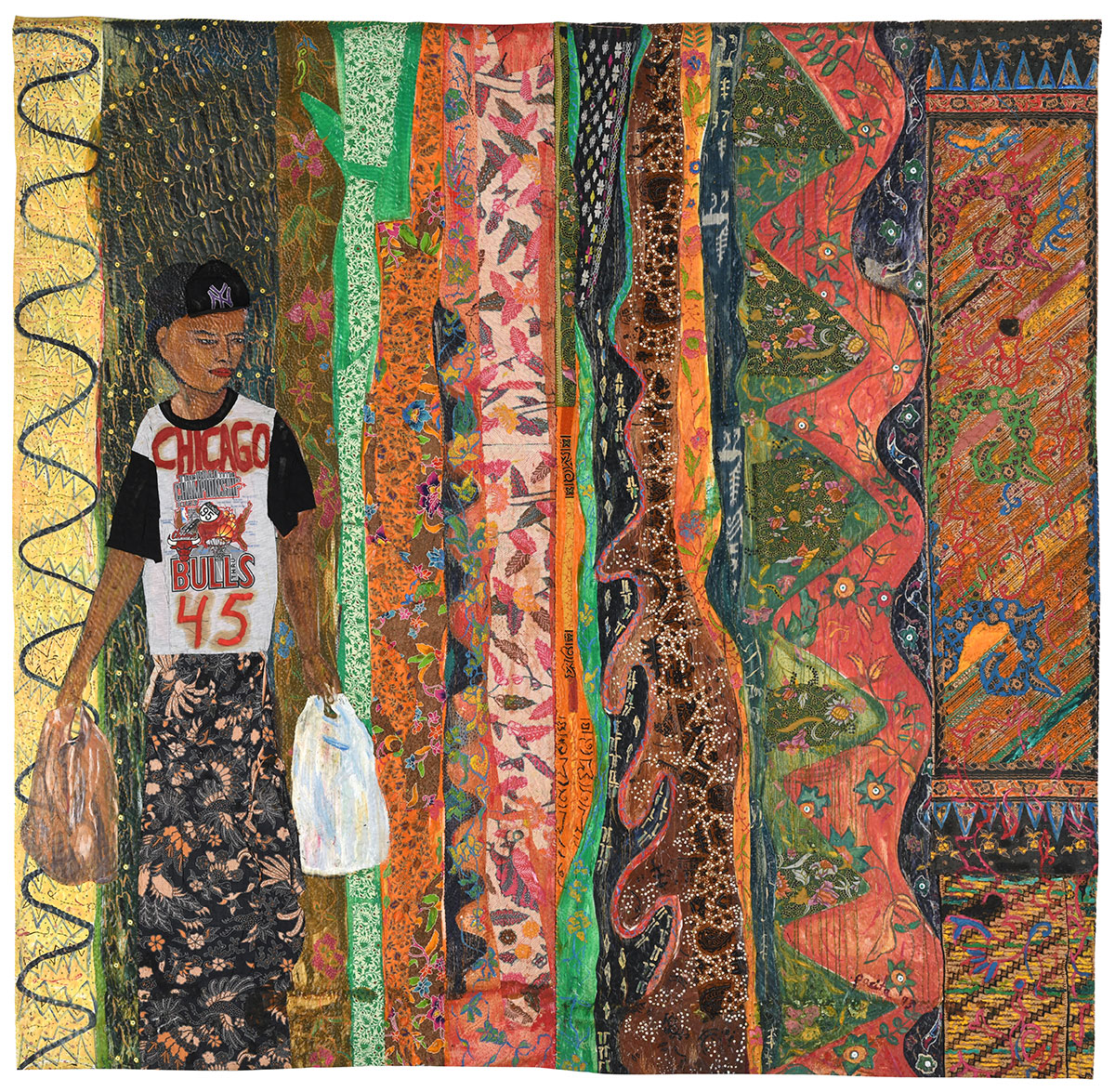

Right: Pacita Abad, Waiting in Washington, 1990, acrylic, plastic buttons, mirrors on stitched and padded canvas, 113 x 68 in., private collection, New York, courtesy the Pacita Abad Art Estate; photograph by Rik Sferra
